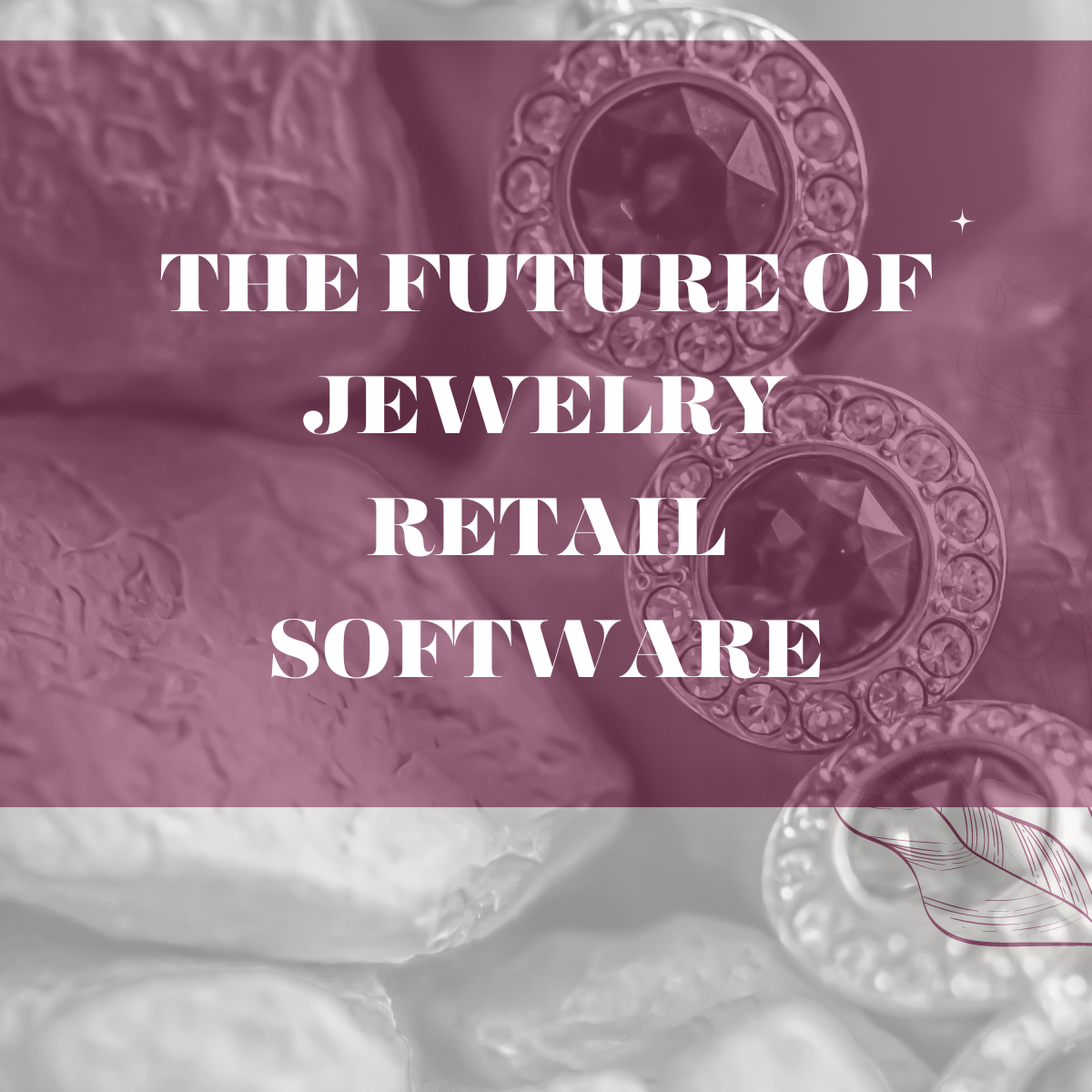The jewelry industry, traditionally known for its brick-and-mortar presence and physical interactions, is undergoing a significant transformation driven by technological advancements. These innovations are revolutionizing not only how jewelry is designed, manufactured, and marketed but also how consumers experience and purchase it. Here’s a glimpse into the future of jewelry retail software, shaped by technology:
Evolving Design and Manufacturing:
1. 3D Printing: Unleashing Design Freedom:
- Intricate and Customized Designs: Unlike traditional methods limited by manual dexterity and tooling capabilities, 3D printing allows for the creation of highly intricate and complex designs with intricate details and unique features. This empowers designers to push creative boundaries and bring their most innovative visions to life.
- Rapid Prototyping and Iterations: 3D printing facilitates rapid prototyping, enabling designers to quickly create physical models of their designs for evaluation and refinement. This iterative process allows for faster development cycles and ensures the final product meets the desired specifications.
- Reduced Production Costs and Waste: Compared to traditional methods that often involve significant material wastage and expensive tooling, 3D printing offers greater material efficiency and cost-effectiveness. This can be particularly beneficial for creating intricate or one-of-a-kind pieces.
2. Computer-Aided Design (CAD): Precision Meets Creativity:
- Enhanced Design Accuracy and Detail: CAD software empowers designers to create highly precise and detailed digital models of their jewellery pieces. This ensures consistent quality and eliminates potential errors that may occur in manual design processes.
- Collaboration and Visualization: CAD software facilitates seamless collaboration between designers, manufacturers, and clients. 3D models can be easily shared and reviewed, allowing for efficient communication and feedback throughout the design process.
- Realistic Renderings and Simulations: Advanced CAD software can generate photorealistic renderings of jewellery pieces, allowing designers and clients to visualize the final product before physical production begins. This aids in decision-making and ensures the final piece aligns with expectations.
3. Artificial Intelligence (AI): The Power of Design Innovation:
- Personalized Design Recommendations: AI algorithms can analyze vast amounts of data, including customer preferences, design trends, and historical sales information. This allows them to generate personalized design recommendations for individual customers, catering to their specific tastes and styles.
- Identifying Design Trends and Predicting Demand: AI can analyze market data and social media trends to identify emerging design preferences and predict future demand. This valuable information can inform design decisions and product development strategies, ensuring collections remain relevant and cater to evolving consumer preferences.
- Optimizing Production Processes: AI can be employed to optimize production processes by analyzing data and identifying potential bottlenecks or inefficiencies. This can lead to faster production times, reduced costs, and improved overall manufacturing efficiency.
Enhanced Online Shopping Experience:
1. Virtual Try-On: Bringing Jewelry to Life Online:
- Augmented Reality (AR): This cutting-edge technology allows customers to virtually “try on” jewelry pieces using their smartphones or webcams. By superimposing digital representations of the jewellery onto their own image, they can experience how the piece would look and feel when worn. This eliminates the need for physical visits to stores and provides a more realistic understanding of the jewellery’s size, scale, and style.
- Customization Options: Some AR applications allow for further customization by enabling users to virtually try on different gemstones, settings, and chain lengths. This interactive experience empowers customers to personalize their choices and find the perfect piece for their individual style and preferences.
2. Interactive Virtual Showrooms: A Sensory Journey from the Comfort of Home:
- Immersive 3D Environments: Online retailers can leverage virtual reality (VR) technology to create interactive virtual showrooms. These immersive environments allow customers to explore collections in 360 degrees, zoom in on intricate details of individual pieces, and even virtually interact with sales representatives for personalized guidance.
- Enhanced Product Discovery: VR showrooms can showcase jewelry collections in captivating ways, highlighting design elements, craftsmanship, and the story behind each piece. This sensory experience can engage customers on a deeper level and foster a stronger connection with the brand and its offerings.
3. Seamless Omnichannel Integration: Bridging the Gap Between Online and Offline:
- Click-and-Collect: This convenient option allows customers to purchase jewellery online and pick it up at a physical store. This eliminates the wait time for deliveries and provides the option to inspect the piece in person before making a final decision.
- Reserve in Store: Online shoppers can reserve specific pieces at their preferred physical store, ensuring the desired item is available for them to try on and purchase upon arrival. This eliminates the disappointment of traveling to a store only to find the desired piece unavailable.
- Live Chat and Video Consultations: Online retailers can offer real-time customer support through live chat or video consultations. This allows customers to connect with knowledgeable representatives, ask questions, and receive personalized recommendations, even while browsing from the comfort of their homes.
Transparency and Sustainability:
1. Blockchain Technology: Ensuring Ethical Sourcing and Responsible Practices:
Traceability and Origin Verification: Blockchain, a secure digital ledger system, allows for the tracking of gemstones and precious metals from their source to the finished product. This provides consumers with immutable data on the origin, mining practices, and ethical certification of the materials used in their jewellery.
- Combating Counterfeiting and Fraud: Blockchain technology can help combat counterfeiting and fraud in the jewellery industry. By providing a secure and verifiable record of ownership, it deters the circulation of fake or ethically sourced materials, building trust and confidence among consumers.
- Empowering Informed Choices: Access to transparent information through blockchain empowers consumers to make informed choices about their jewellery purchases. They can support brands committed to ethical sourcing and responsible practices, aligning their purchasing decisions with their values.
2. Sustainable Materials and Practices:
- Lab-Grown Diamonds: Technological advancements have enabled the creation of lab-grown diamonds with identical physical and chemical properties to mined diamonds. This sustainable alternative offers a conflict-free and environmentally friendly option for consumers seeking ethically sourced gems.
- Recycled Metals and Eco-Friendly Materials: Utilizing recycled metals and eco-friendly materials such as sustainable gemstones and recycled packaging can significantly reduce the environmental impact of jewellery production. This caters to the growing demand for sustainable and responsible choices within the industry.
- Transparency in Manufacturing Processes: Consumers are increasingly interested in understanding the environmental and social impact of the manufacturing processes used to create their jewellery. Brands that embrace transparency by disclosing their manufacturing practices and partnering with ethically responsible suppliers can build trust and attract environmentally conscious consumers.
Challenges and Considerations:
While technology offers significant potential for promoting transparency and sustainability in the jewellery industry, certain challenges need to be addressed:
- Accessibility and Adoption: Ensuring widespread adoption of blockchain technology across the entire supply chain requires collaboration and investment from various stakeholders.
- Consumer Awareness and Education: Raising consumer awareness about the benefits of transparent and sustainable jewellery choices is crucial to drive demand and support responsible practices.
- Maintaining Affordability: Implementing sustainable practices and utilizing ethically sourced materials can sometimes come at a higher cost. Balancing affordability with ethical considerations remains a challenge for the industry.
Overall, technology is acting as a powerful catalyst for positive change in the jewellery industry. By embracing transparency and sustainability through innovative solutions, the industry can build trust with consumers, minimize its environmental footprint, and ensure responsibility. By embracing these technological advancements and evolving consumer preferences, jewellers can create a thriving future that caters to the needs of a tech-savvy and ethically conscious consumer base.
FAQs:
1. How is technology changing jewellery design?
3D printing allows for intricate and customized designs, while CAD software facilitates precise creation and collaboration. AI can even suggest personalized designs and predict trends.
2. What are some innovative features of online jewellery shopping?
Virtual try-on with AR technology allows customers to see how jewellery looks on them virtually, while interactive VR showrooms offer immersive product exploration.
3. How is blockchain impacting the jewellery industry?
Blockchain ensures ethical sourcing and responsible practices by tracking the origin and journey of gemstones and precious metals.
4. What are some sustainable practices gaining traction in jewellery?
Lab-grown diamonds offer a conflict-free alternative, while recycled metals and eco-friendly materials are reducing the environmental impact of production.
5. What are some challenges associated with the future of jewellery retail?
Ensuring widespread adoption of new technologies, raising consumer awareness about ethical choices, and maintaining affordability while implementing sustainable practices are ongoing challenges.












